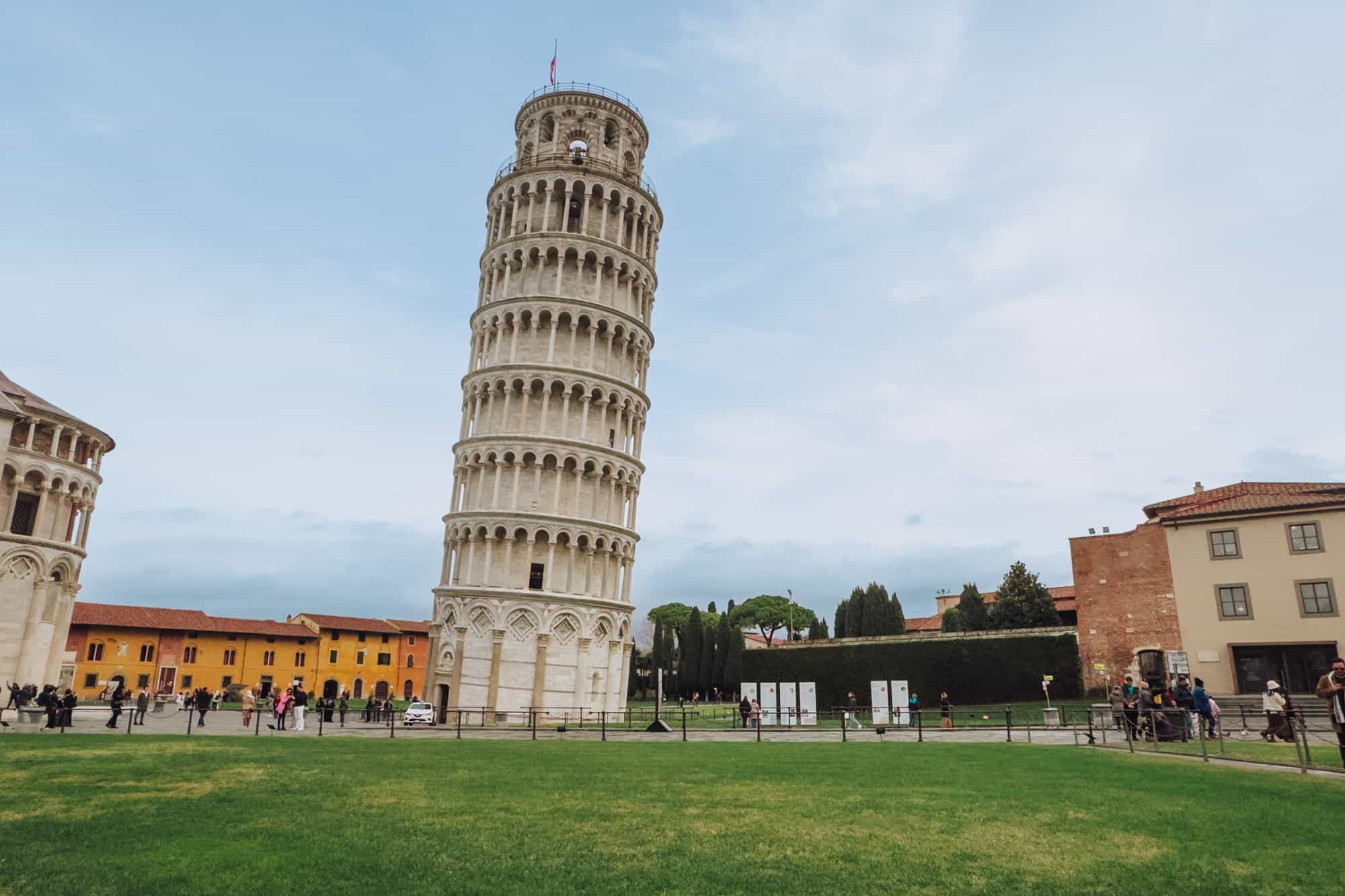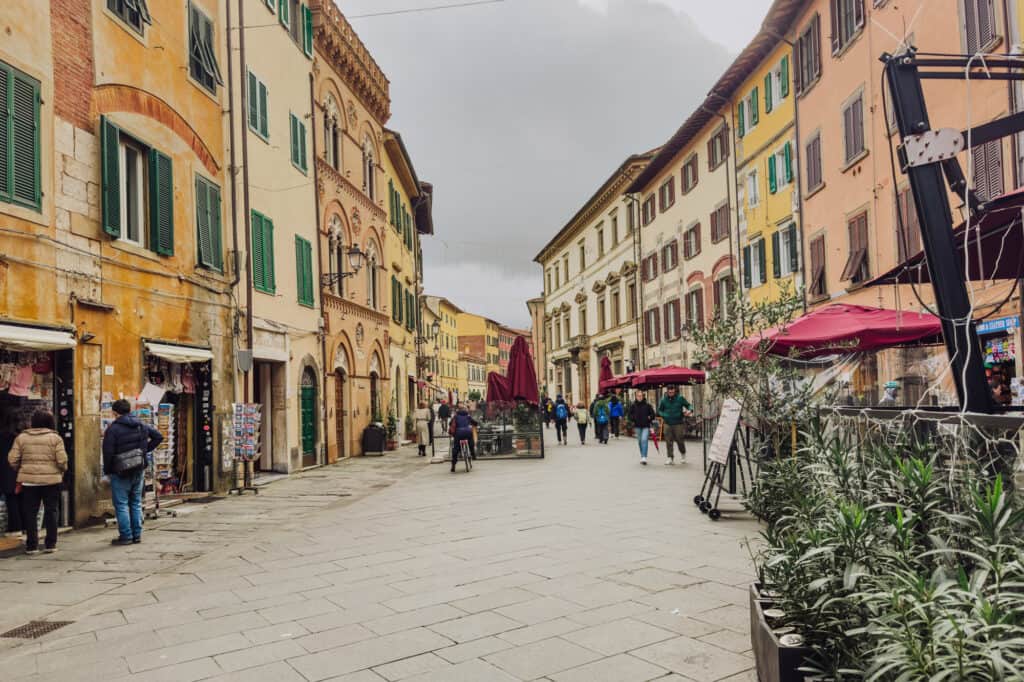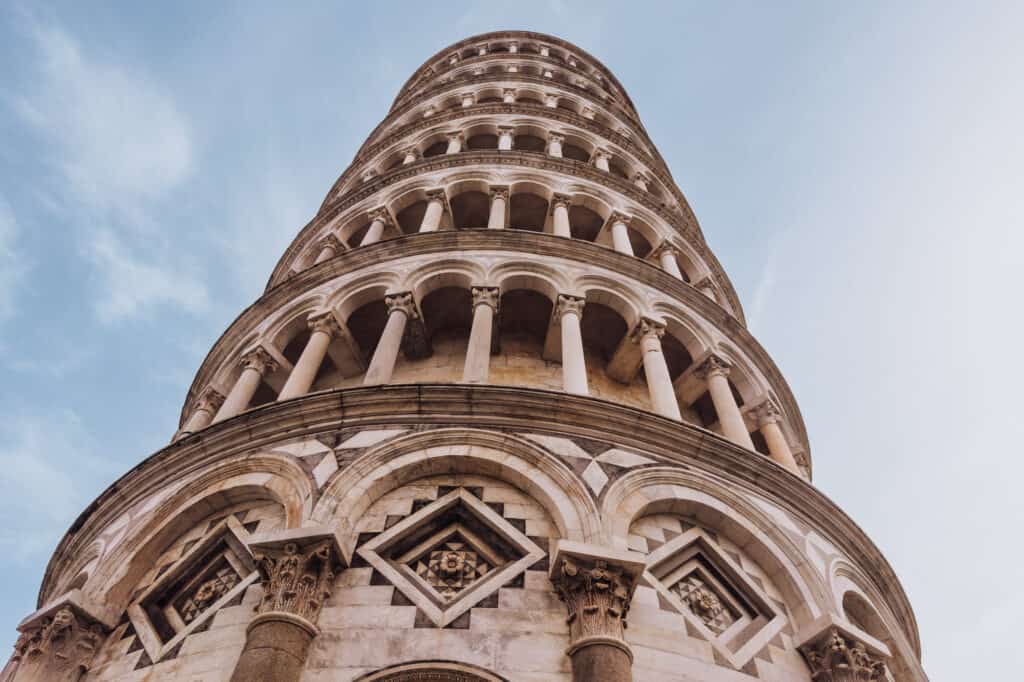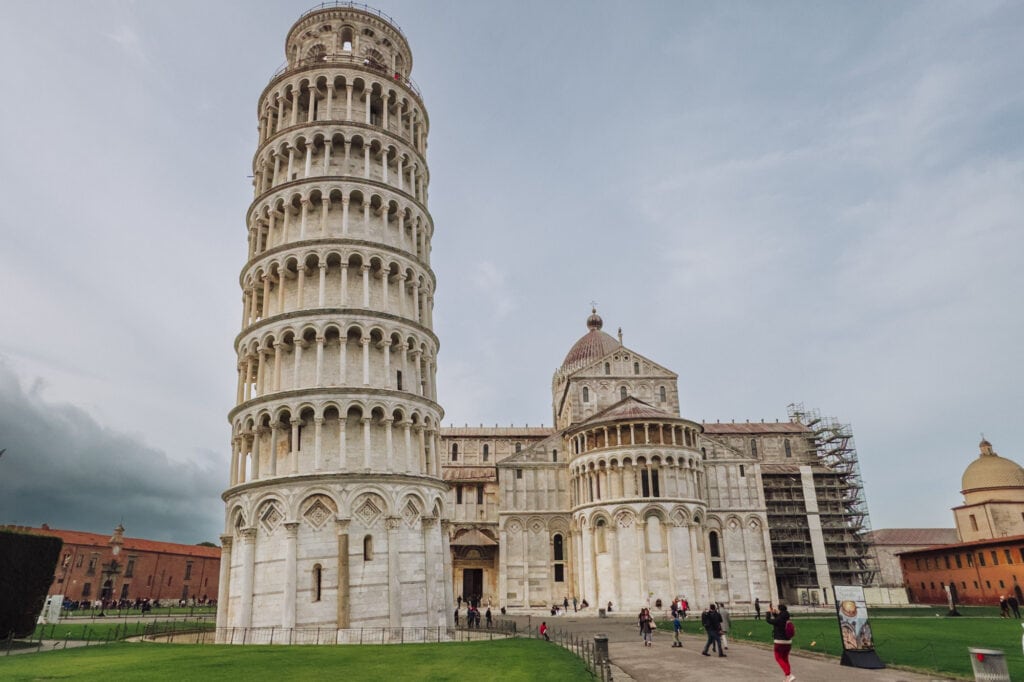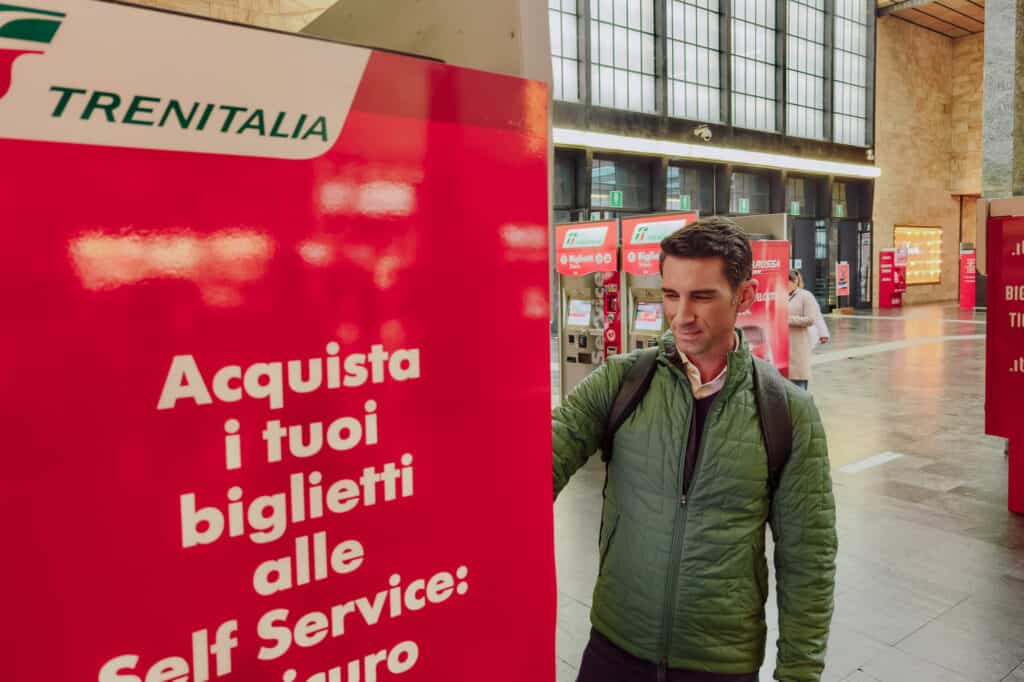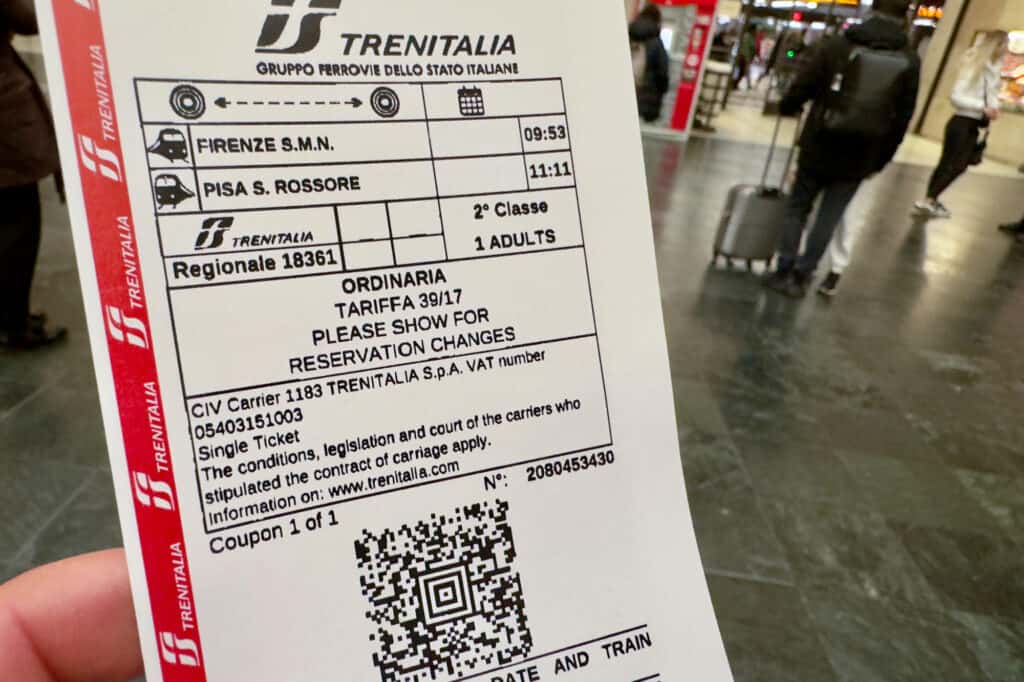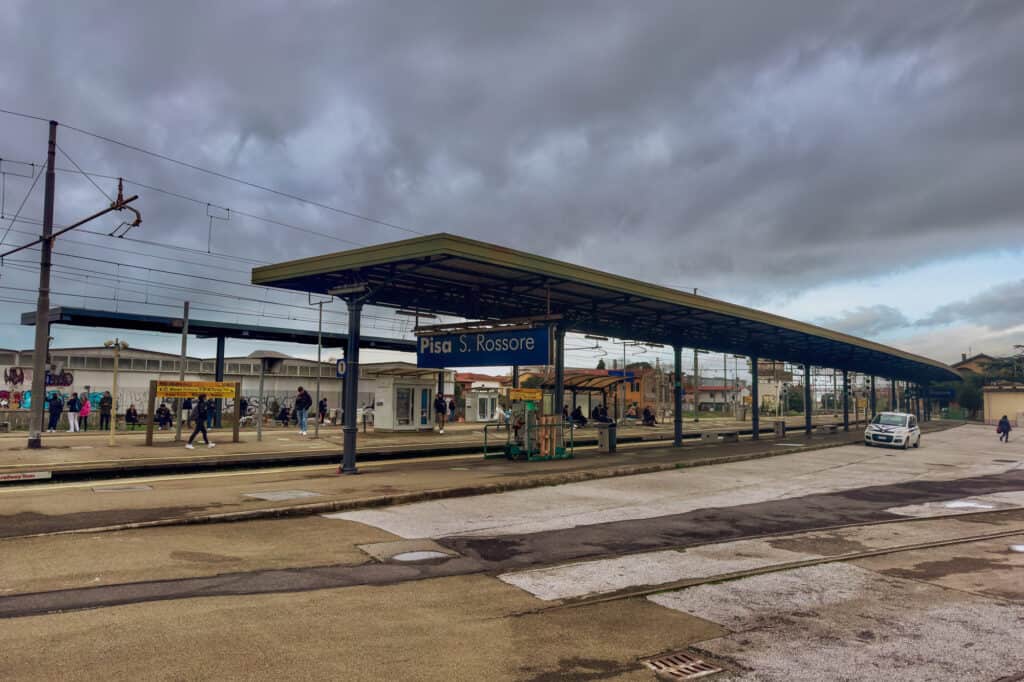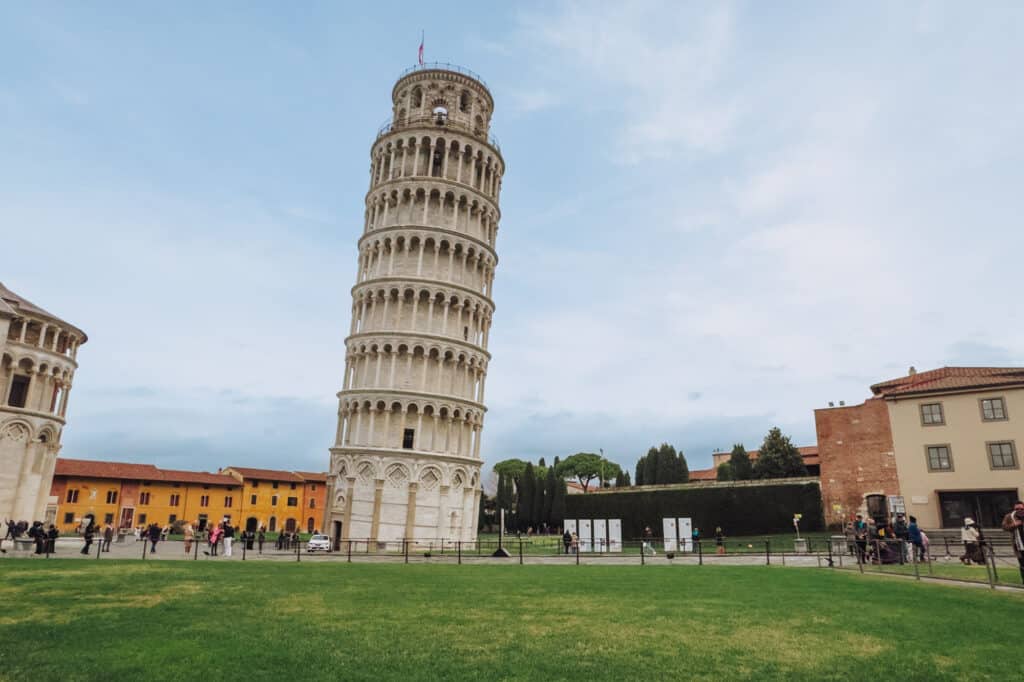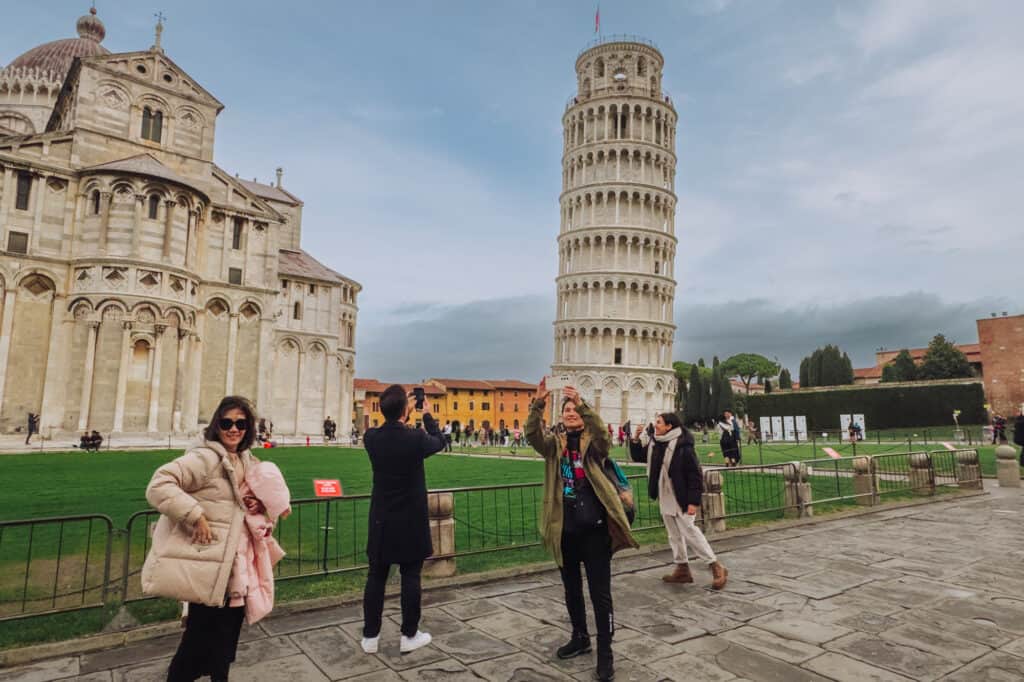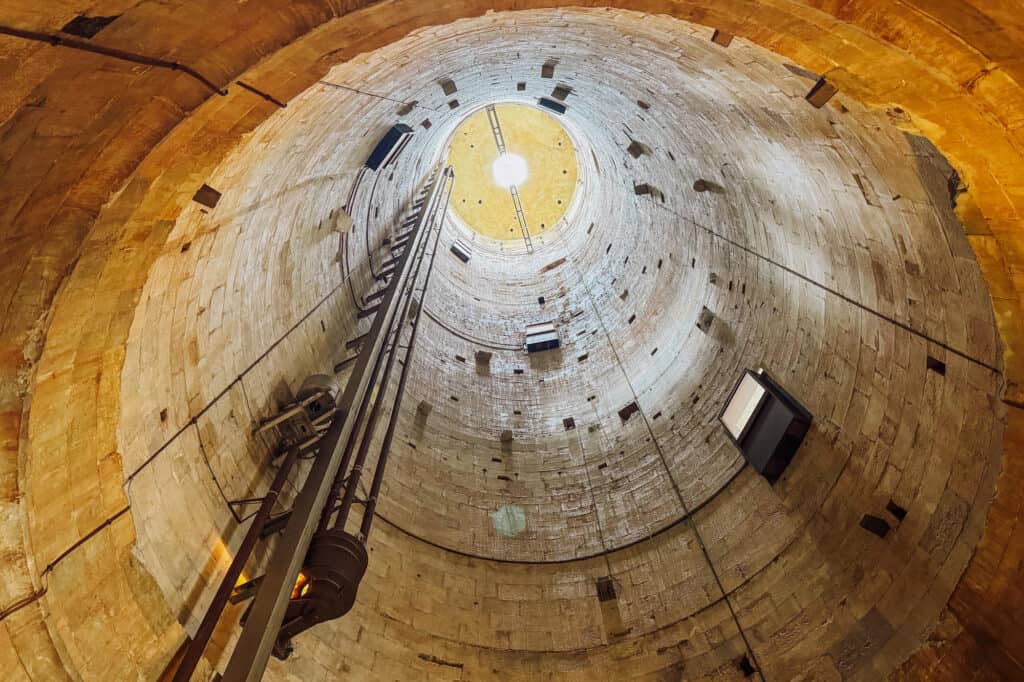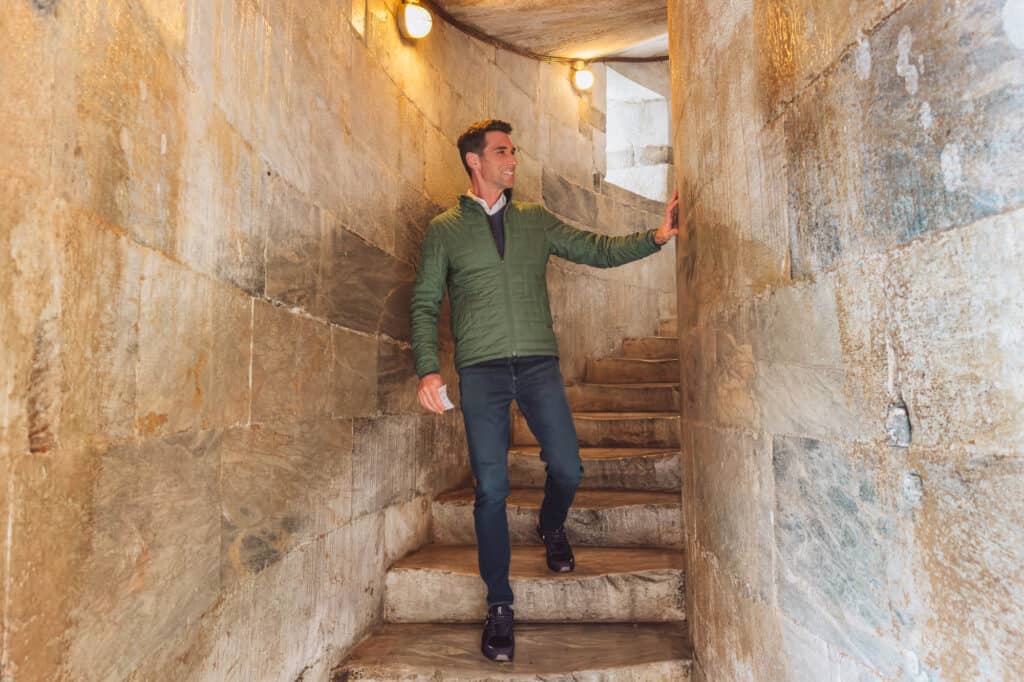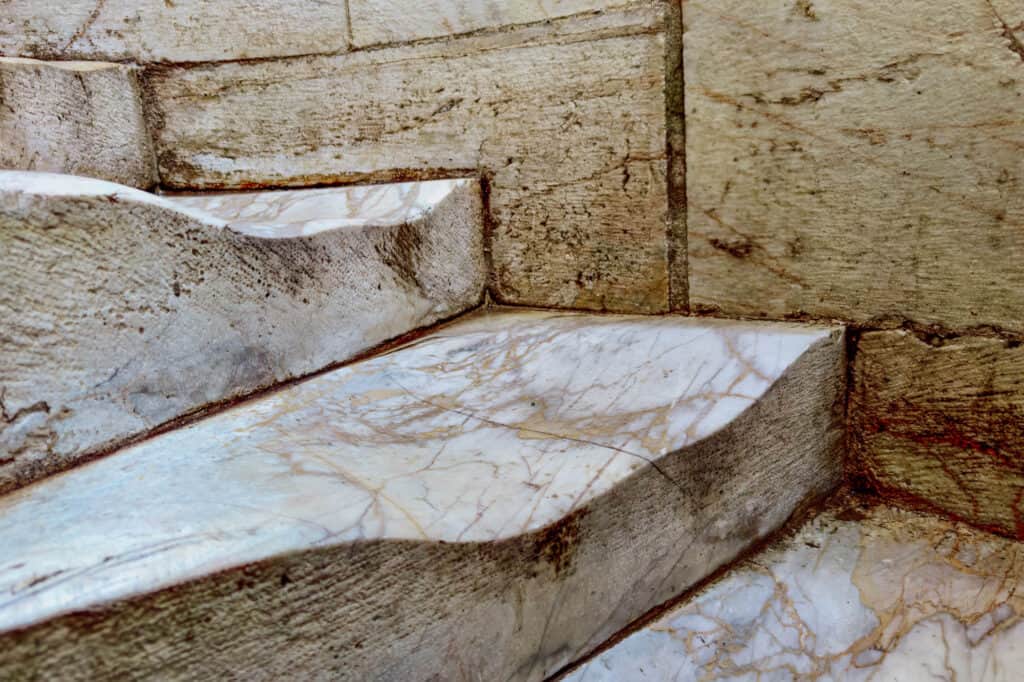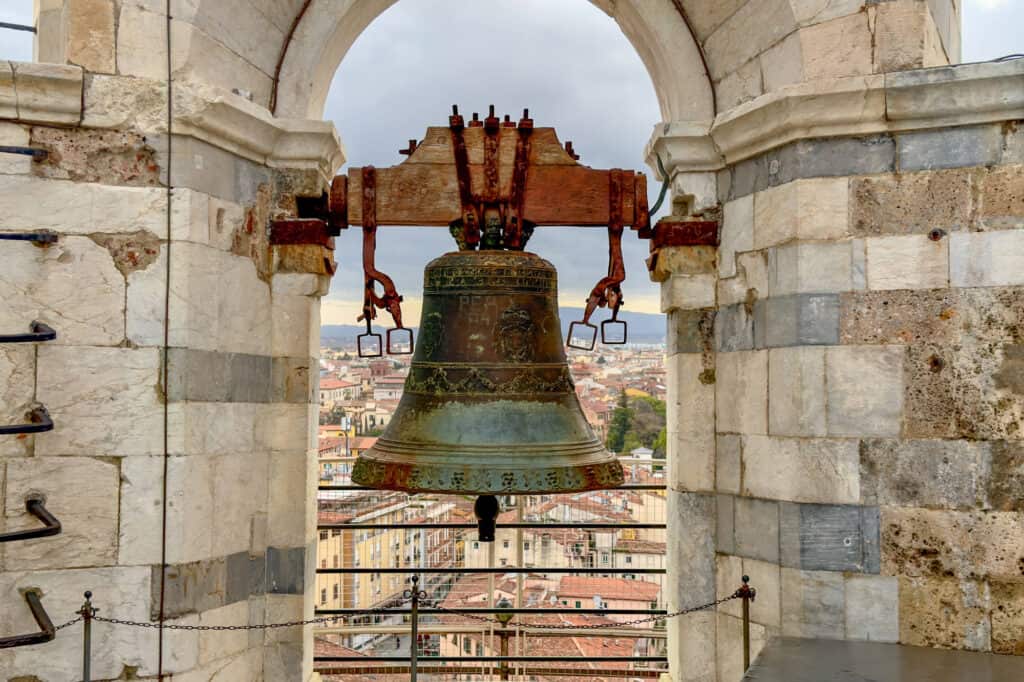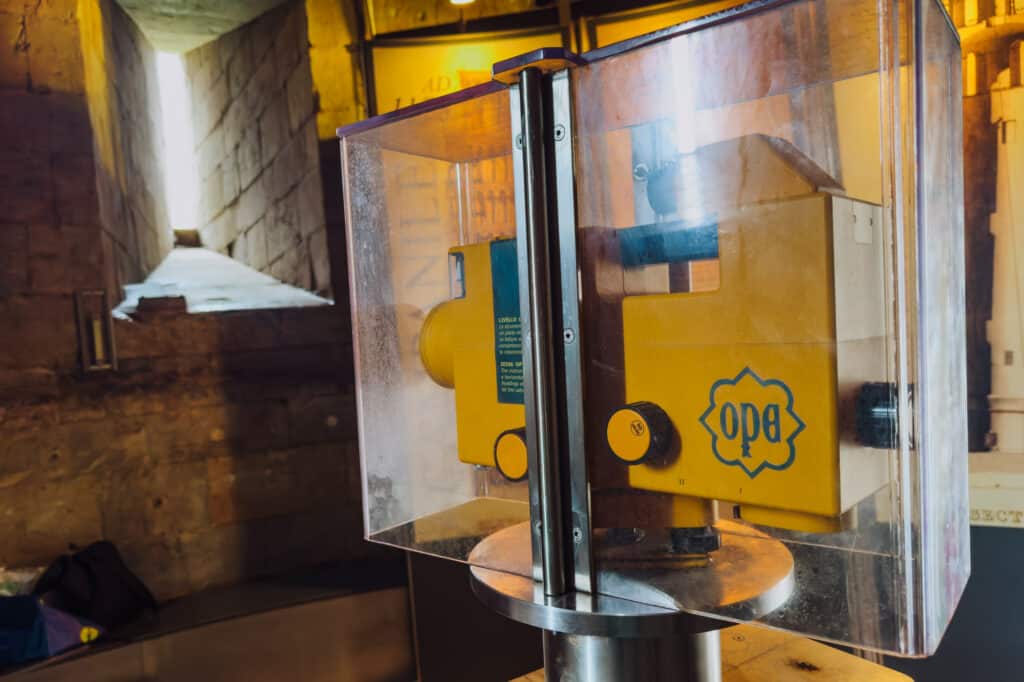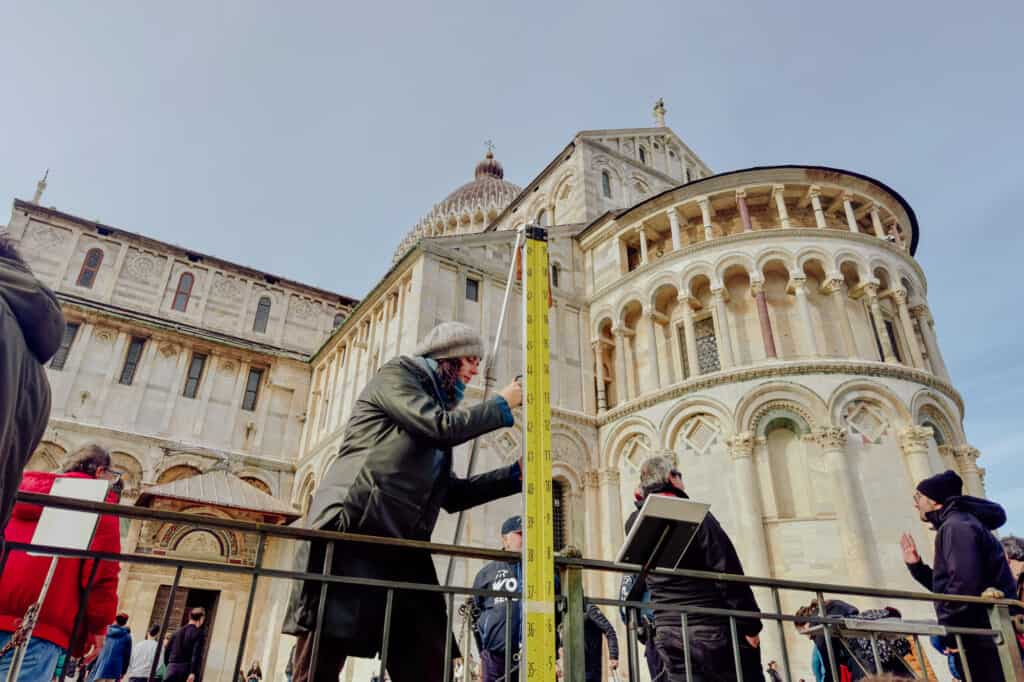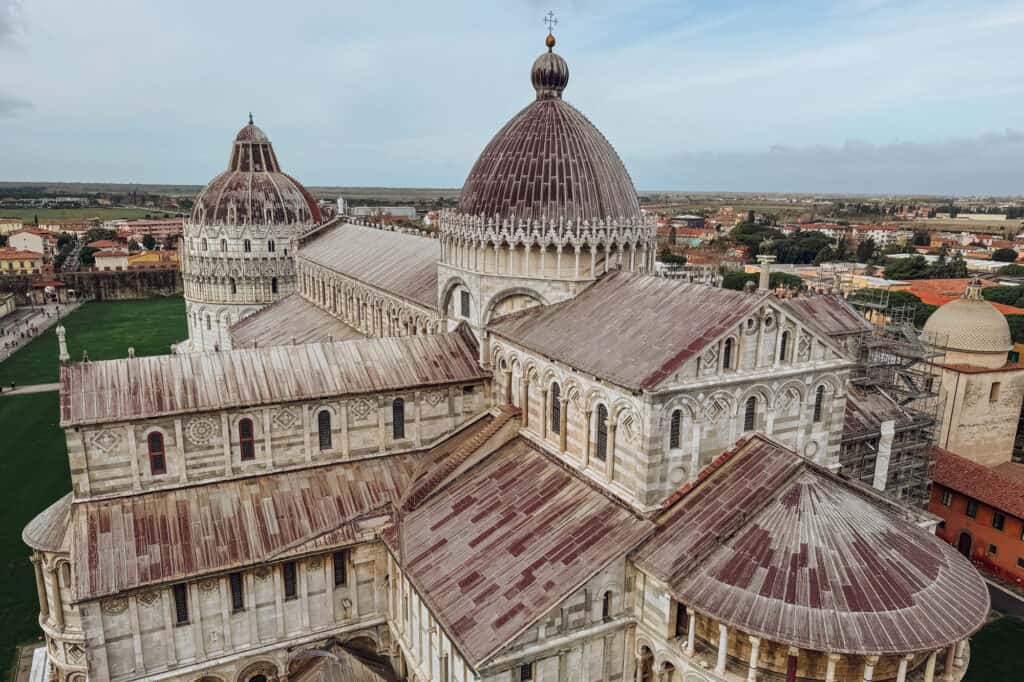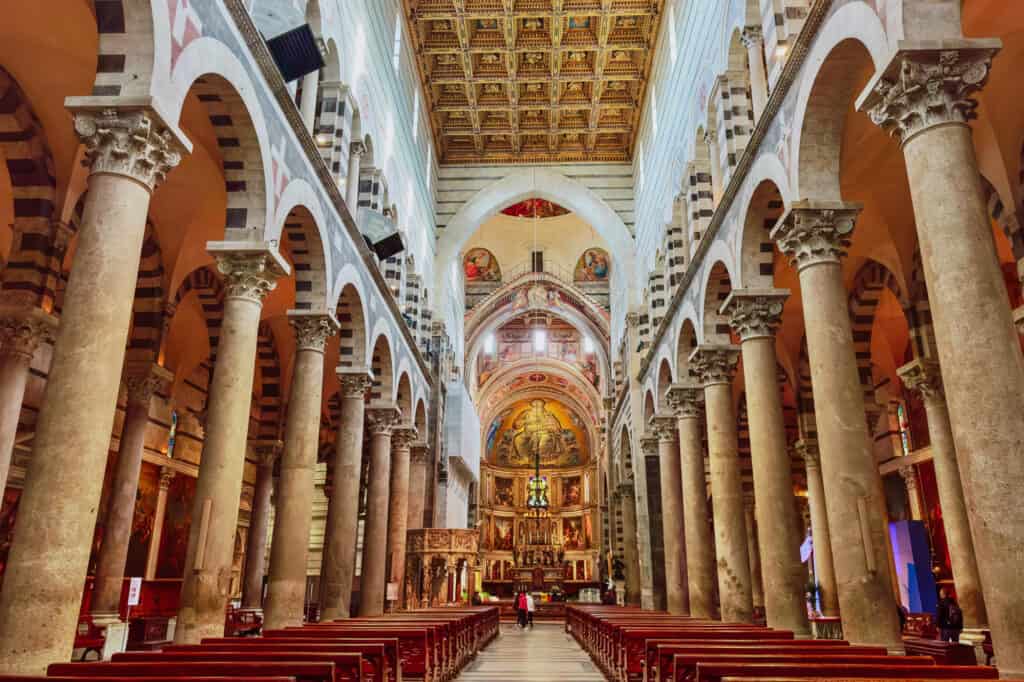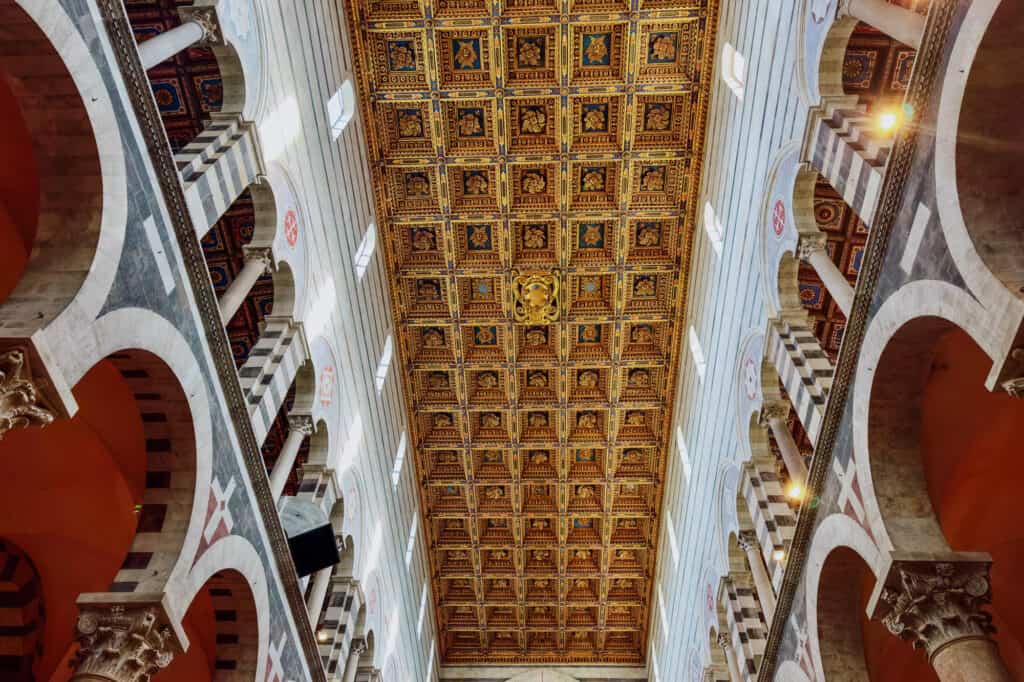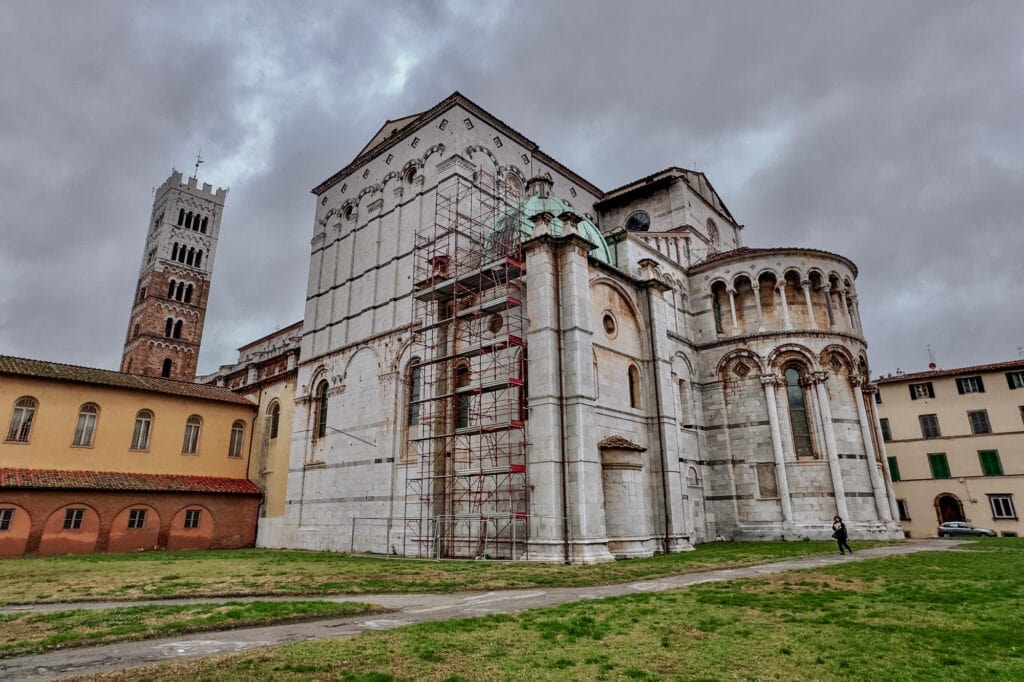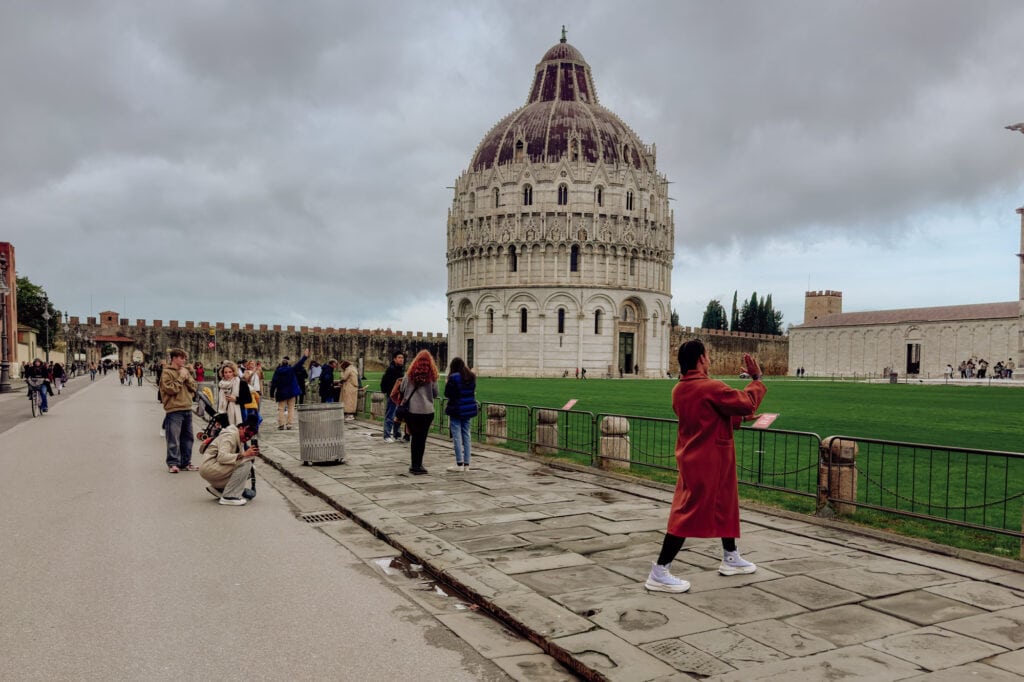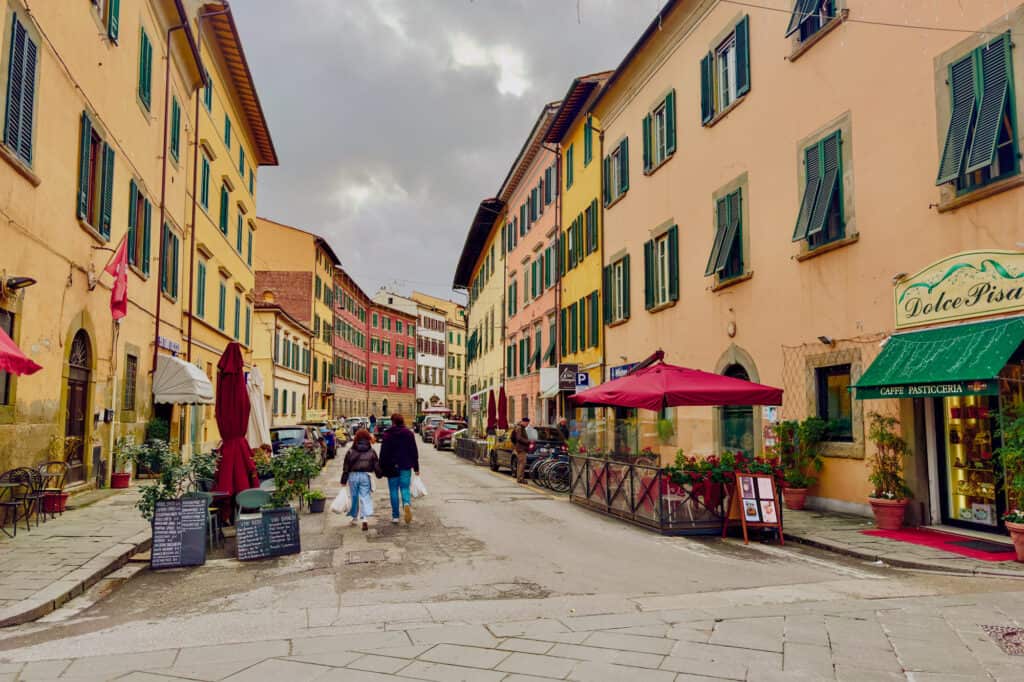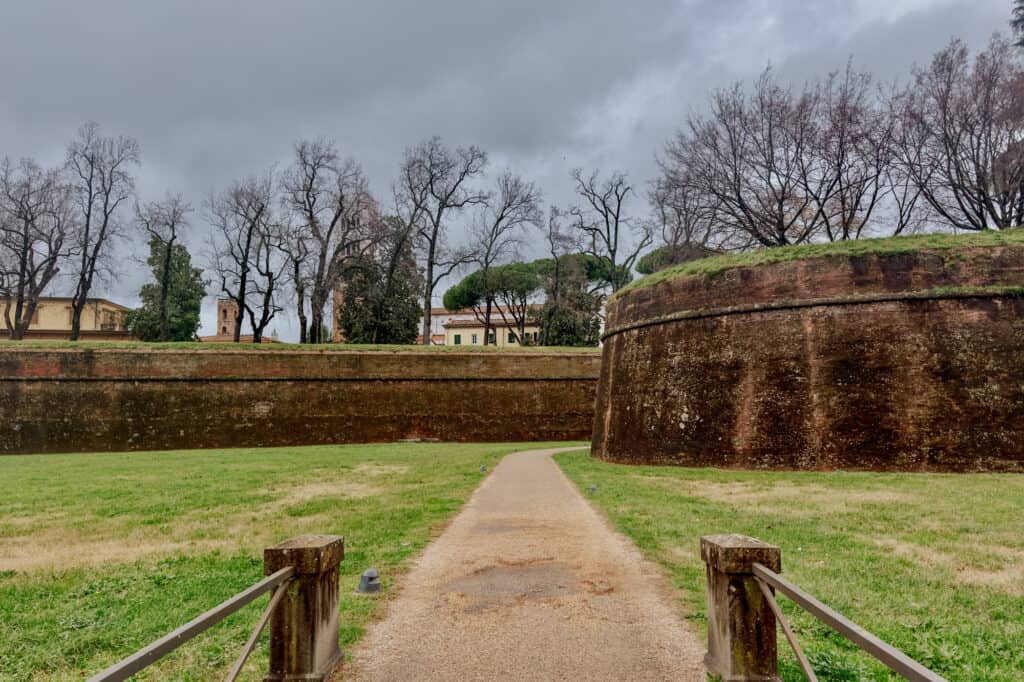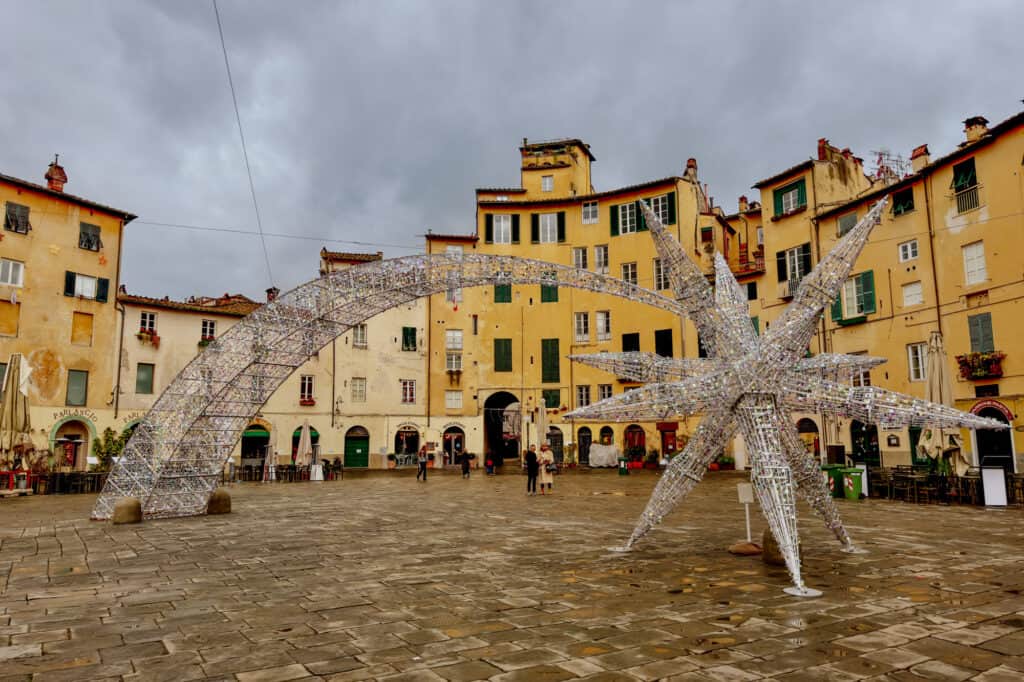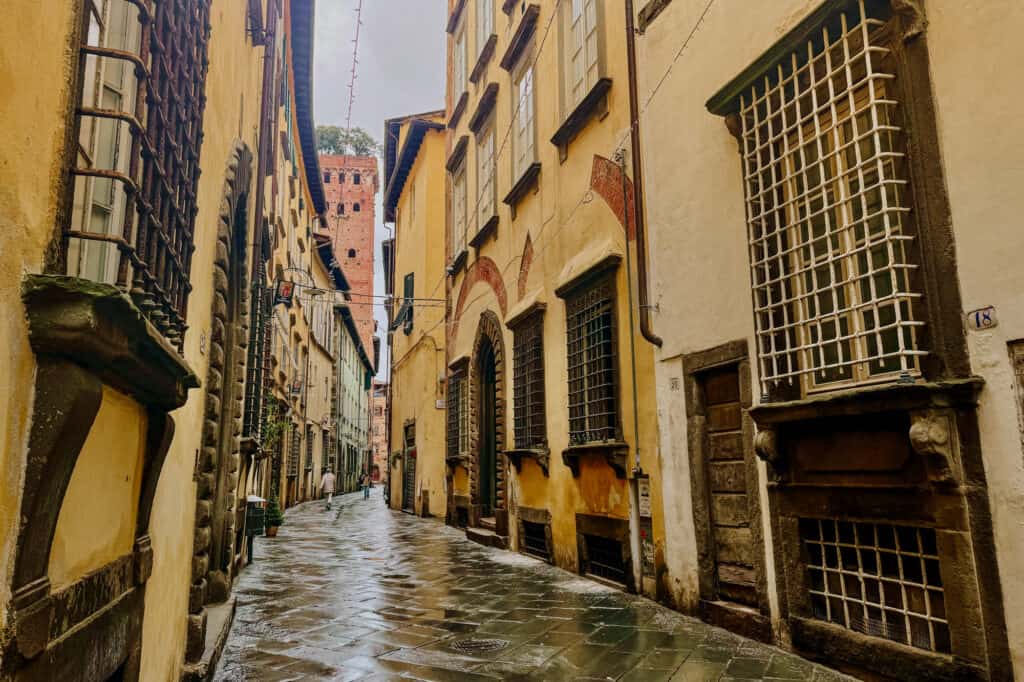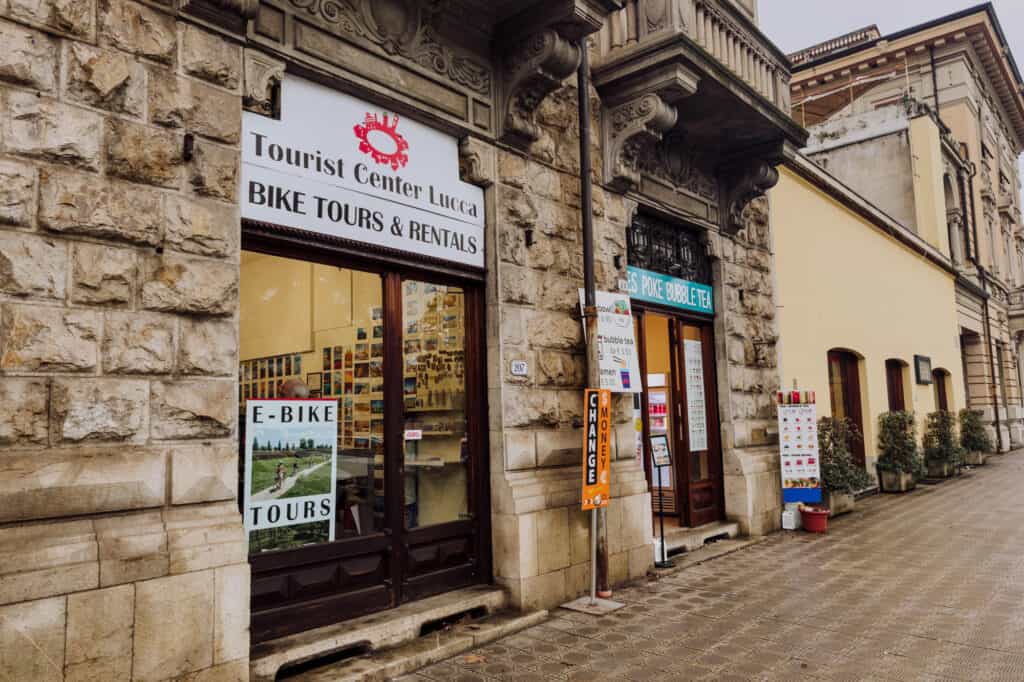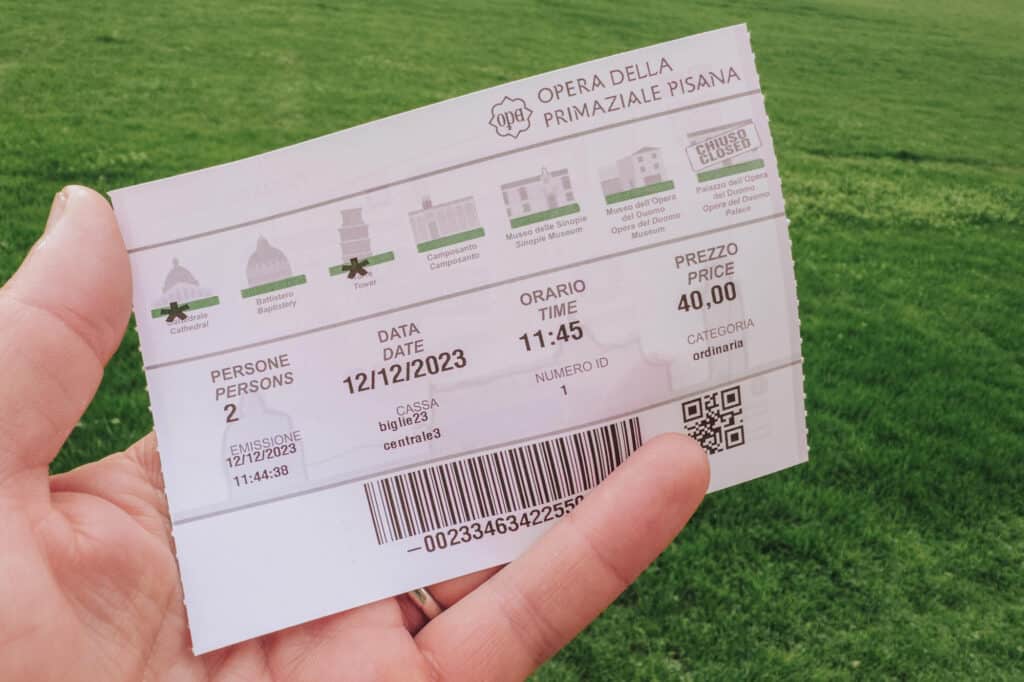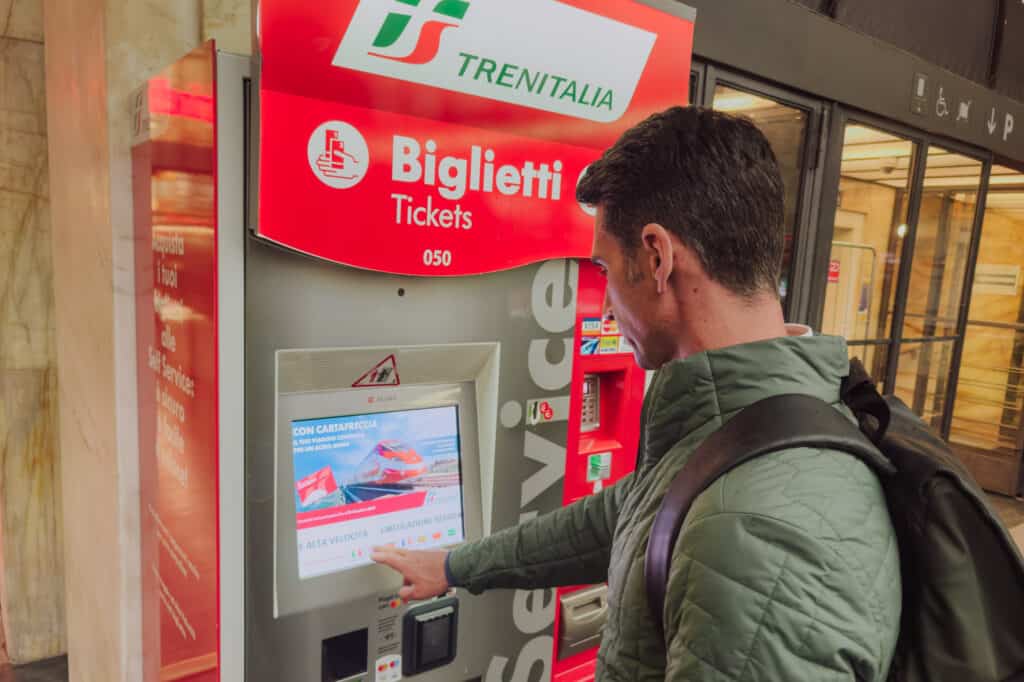The Perfect Day Trip to Pisa from Florence
Pisa is home to one of the iconic symbols of Italy, and it’s easy and worthwhile to make a day trip from Florence.
This post contains several options:
- How to visit Pisa in just a couple of hours.
- How to spend an entire day in Pisa.
- How to combine a trip from Florence to Pisa with other great spots.
You can use the table of contents below to jump to the section you think interests you the most!
Guided Tours: Day Trip to Pisa From Florence
While it’s easy to take the train yourself on a day trip to Pisa from Florence, there are several great tour options, too.
These are ideal if:
- You’d rather have someone else deal with the logistics.
- You don’t enjoy public transportation.
- You also want a guide with knowledge along the way.
Here are the top day trip options from Florence to Pisa, each with excellent reviews:
Renting a Car: Day Trip to Pisa From Florence
Renting a car and driving in Italy is a good idea, even if you use it for day trips. It allows you the freedom to stop in other small towns you see along the way.
I usually use Discover Cars in Europe, because they include all the big international brands, plus some local rental companies.
➡️ Click to Search Discover Cars
And, yes, you drive on the right side of the road, in case you were wondering.
The drive from Florence to Pisa will only take one hour, and it’s hassle-free once you leave the city of Florence.
There’s a public parking lot just west of the Piazza del Duomo, or Piazza dei Miracoli, where the Leaning Tower of Pisa is located (Torre de Pisa).
Train: Day Trip to Pisa From Florence
If you’re up for enjoying some quality Italian public transportation (and who wouldn’t be, with such a great train system!) you’ll find the Trenitalia line very easy to use.
I’ve been using Trainline to book trains in Europe. It’s simple to search the schedules, and you avoid having to use the kiosks in the train stations. They send you a QR code to your text and email, which you have scanned at the station to board.
➡️ Click to Book Train Tickets in Italy
It’ll take about an hour and 20 minutes to get to Pisa from Florence.
Florence Train Station: Firenze S. Maria Novella
The train station you’ll use in Florence is the main one: Santa Maria Novella.
It’s pretty large, with trains stopping and going to and from all corners of Italy.
When you walk, you’ll see the “Bigliateria” area, or ticket area. They have windows with humans to help you out, or you can use one of the self-serve kiosks. They’re easy to use.
PRO TIP: Don’t book a ticket to Pisa Centrale. Make sure you choose Pisa S. Rossore.
PRO TIP: Choose a train that gets you there in under 90 minutes. Some options will stop too many times and it’ll take more than 2 hours.
The cost of a one-way trip to Pisa from Florence will be about 9 or 10 Euros
The train station makes it easy to watch for your train number and find your track. Just remember: it might not say “Pisa” on the ‘destination’ column on the board, since it lists the train’s final destination (which will likely be beyond Pisa). So look for the train number to find your track.
You’ll likely have to scan the barcode on the ticket (or in your email) to get through to the boarding area.
The trains depart every 30 to 40 minutes to Pisa.
Pisa S Rossore
Pisa Centrale may seem like the obvious choice for a trip to Pisa, but getting off the train there will add an extra 30-minute walk to the tower.
The Rossore station will drop you off a few blocks away from the main sites. It’s far from a glamorous station, but it’s right next to a university. You’ll be safe and surrounded by crowds of college students.
The Leaning Tower of Pisa
Walk from the Pisa S Rossore Tration Station toward the Piazza dei Miracoli, or Piazza del Duomo.
As soon as you enter, you’ll realize: The tower LEANS! It leans far more than I was expecting.
Italy has several other towers that lean (I can think of a couple in the Venice area), but Torre de Pisa LEANS!
It’s striking compared to the cathedral and other surrounding buildings.
Construction: Torre di Pisa / Leaning Tower of Pisa
It took around 200 years to build the Tower:
- Began in 1173
- Completed in 1372
- Originally: Bell tower for the cathedral
The Lean
Soft ground caused the foundation to settle unevenly during the tower’s construction. By the time the ancient builders reached the third floor, the tilt was noticeable!
Despite attempts to compensate for the lean in later construction stages, the tower continued to lean further over time.
It’s been a challenge, but also remains the biggest attraction in Pisa. You’ll see a crowd posing for photos “holding” the tower upright.
Attempts to Fix the Lean
Efforts to stabilize and straighten the tower began in the late 20th century over concerns about its structural integrity.
- 1990: the tower was closed to the public for safety reasons.
Engineers worked on various strategies to correct the lean without completely straightening it, as the tilt had become part of the Torre di Pisa’s identity and attraction.
- 1993: Restoration efforts to reduce the lean began.
These included soil extraction and counterweights, to reduce the tilt enough to ensure its stability.
From inside the tower, you can see some of the structural engineering in place.
The Leaning Tower of Pisa Reopens
After nearly a decade of restoration work, the Leaning Tower of Pisa was reopened to the public in 2001.
- Cost: 20 Euros
- Timed entries, every 15 minutes
- 50 people allowed up every 15 minutes
Climbing the Torre di Pisa
If you choose to climb to the top of the Leaning Tower of Pisa, you’ll never go a single step forgetting it’s truly leaning! You’ll be tilted the entire way up.
Key Info: There are 293 steps to the top of the Torre di Pisa!
It’s amazing to see the way the centuries-old stone steps are smoothly carved out. They’ve been worn down by the feet, sandals, and shoes, of millions of people. It was my favorite part of the climb.
The view from the top is sweeping and panoramic. The circular bell tower is surrounded by bells, which ring at the top of each hour.
Measuring the Tilt
The current lean of the Leaning Tower of Pisa is almost 4 degrees off the vertical axis. One of the tools engineers use is on-site. You can try it for yourself.
To maintain the safety of the structure and track any alterations in its tilt, regular monitoring and measurements are conducted. Initially, measurements were taken every three months, but as the stabilization efforts have proven successful, the frequency has decreased.
The tower’s lean is typically assessed annually to ensure its stability.
Cattedrale di Pisa
The Cattedrale di Pisa, also known as the Pisa Cathedral or the Cathedral of Santa Maria Assunta, is adjacent to the Leaning Tower of Pisa.
Construction of the cathedral began in 1063 and continued for several centuries.
Inside, you’ll see its impressive columns, as well as beautiful artwork, including paintings, sculptures, and frescoes.
The ceiling is amazing, and last rebuilt after a fire in 1595.
The Baptistery
The Baptistery of St. John is the huge, circular structure located near the cathedral.
Construction of the baptistery began in the 12th Century, and lasted into the 14th century.
The acoustics inside the baptistery are renowned for their exceptional quality. Visitors often experience the captivating sound reverberations when someone sings or speaks, creating a unique auditory experience.
Inside, the baptistery features intricately carved pulpits, statues, and a beautiful baptismal font. The pulpit, created by Nicola Pisano, is a remarkable example of medieval sculpture.
The baptistery was traditionally used for baptisms and religious ceremonies, and its design reflects the importance of these rituals in medieval Pisa.
The Museo dell’Opera del Duomo
The museum exhibits a collection of sculptures, artifacts, and artworks that were once part of the cathedral, baptistery, and other buildings on the square. It offers insights into the history and artistry of the monuments in Piazza dei Miracoli.
Cafes
The streets leading away from the piazza are full of cafes and restaurants to have lunch in before moving on.
Add On to a Day Trip to Pisa From Florence
I travel efficiently and quickly, compared to a lot of people. So if you have a lot of time to explore the museums and other sites of Pisa, great!
On my last visit, I was trying to squeeze as many things into the day as possible.
The train system in Italy makes it possible to add on a few stops to a day trip to Pisa.
Lucca
- 30 minutes on the train from Pisa
- North of Pisa
Lucca is known for its Renaissance-era city walls, which encircle the historic center.
The old town is a labyrinth of narrow cobblestone streets, stores, cafes, and piazzas
As you walk through, aim for Piazza dell’Anfiteatro, a former Roman amphitheater. It’s now a lively square surrounded by cafes, shops, and historic buildings.
You’ll also pass by the Cathedral of St. Martin (Duomo di San Martino) and can climb the Torre Guinigi for panoramic views of the city.
People love Lucca’s local shops, featuring Italian-made crafts and foods.
You can also rent a bike and ride the paths on top of the city walls.
Livorno
- 20 minutes on the train from Pisa
- South of Pisa, on the coast
Livorno is a port city on the western coast of Tuscany. Visitors can check out the Old Fortress (Fortezza Vecchia) and the New Fortress (Fortezza Nuova), which each showcase Livorno’s maritime history.
- Venetian Quarter: Known as the Venezia Nuova, this area features picturesque canals, charming bridges, and elegant buildings dating back to the Renaissance period.
- Central Market: The Mercato Centrale is a bustling market where visitors can sample local produce, fresh seafood, and traditional Tuscan specialties.
- Terrazza Mascagni: This seafront promenade offers views of the sea, and is famous for its checkerboard marble tiles.
Livorno is home to the Italian Naval Academy, and the port area, built by the Medici family, is a lively hub with waterfront cafes, bars, and restaurants.
Florence isn’t known for its seafood, so if you’re hoping for an Italian seafood fest, Livorno’s your place!
If you’re driving, you can see how close all of these beautiful cities and towns are to Florence:
Pisa to Florence
It’s an easy trip back to Florence after a day trip to Pisa!
You can get back from Pisa S. Rossore station in as little as an hour and 10 minutes.
It’s easy to find the route on Trenitalia. The train will probably make around four stops along the way.
Pisa to Florence trains leave about twice an hour. Make sure to choose a direct option, since there’s no need to change trains along the way!
FAQs on a Day Trip to Pisa
Let’s tackle a few frequently-asked-questions about a day trip to Pisa from Florence. Most of these are answered above.
Can you climb the Leaning Tower of Pisa?
Yes, it’s 293 steps, and you’ll feel the “lean” the entire way! The cost is 20 Euros, and the ticket includes entry into the adjacent cathedral.
Is there a high-speed train from Florence to Pisa?
Not exactly. The cities are geographically close, and most of the high-speed trains will run between metro areas that are a bit farther apart (think: Florence to Rome).
How far is Pisa from Florence?
Despite the stops, you’ll be able to get to Pisa from Florence in just about 80-90 minutes by train. Check Trenitalia’s app, or Google Maps.
Wrap: Is a Day Trip to Pisa Worth It?
To be totally honest here, many people will argue: if you’re trying to see as much of Tuscany as possible in a short amount of time, Pisa itself does not warrant an entire day.
Still, you can make the visit, enjoy the architecture, the history, and a climb to the top of the Leaning Tower, and move on with other adventures in Florence and Tuscany.
The train ride from Florence is relatively short, making it convenient for a day trip.
If you’re looking for other day trips from Florence, check out San Gimignano and Cinque Terre. From Rome, the hilltop towns of Orvieto and Assisi are both beautiful and popular with visitors to Italy!
